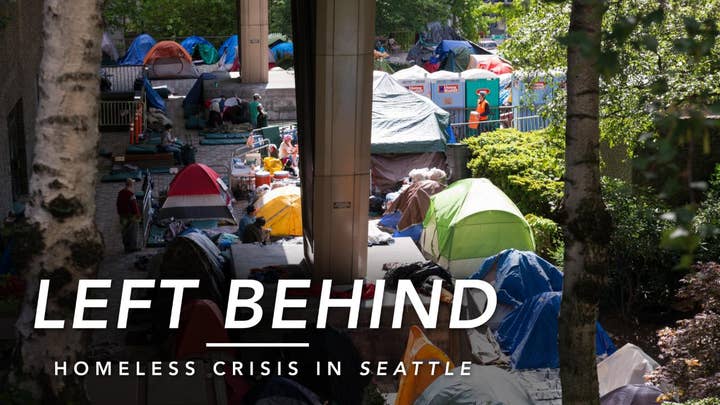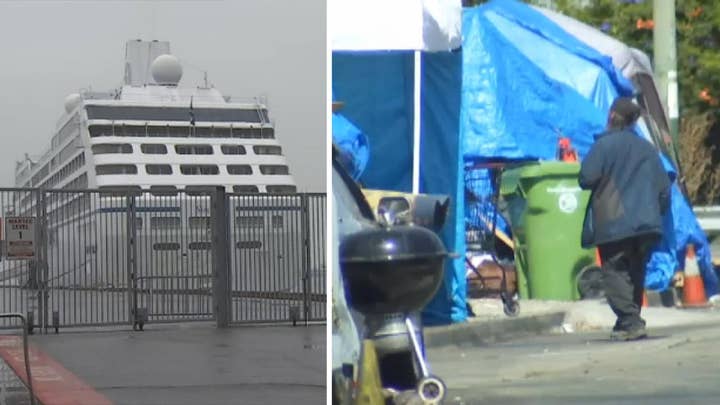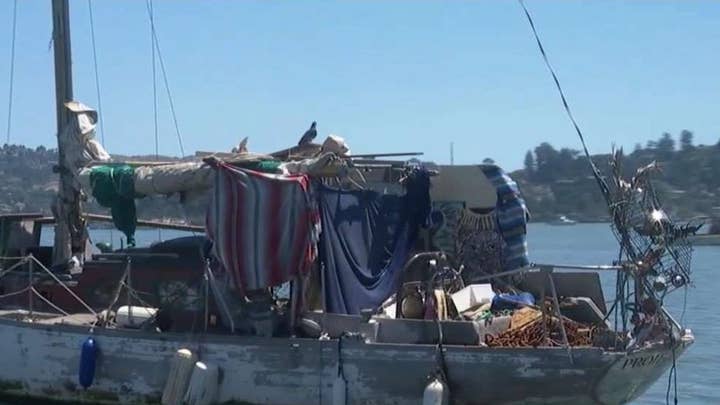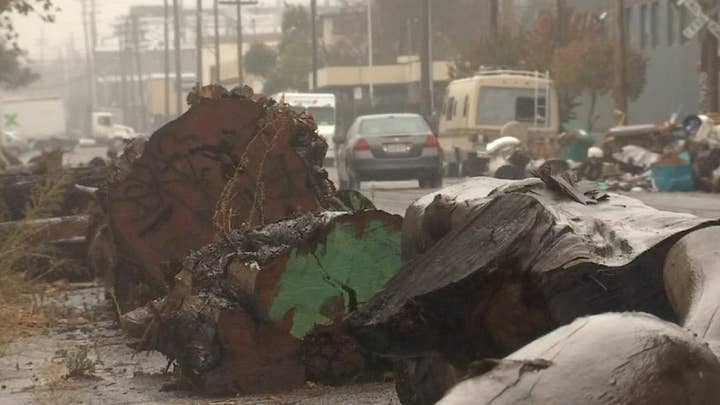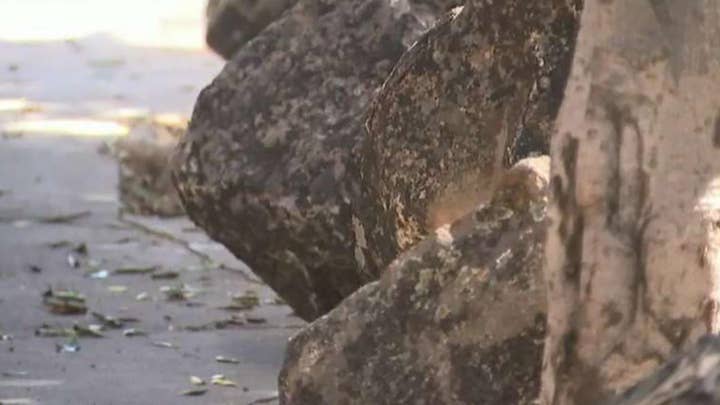Left Behind: America's Homeless Crisis
Fox News Digital embarked on an ambitious project to chronicle the toll progressive policies have had on the homeless crisis in four west coast cities: Seattle, San Francisco, Los Angeles and Portland, Ore. In each city, we saw a lack of safety, sanitation, and civility.
Outrage. Frustration. Fear. Those are some of the words residents used in 2019 to describe the growing homelessness problem across the United States. There were numerous cases of harassment, rampant drug use and disturbing displays of mental illness that shined a light on the harsh reality that America's once-containable homeless problem had morphed into a modern-day crisis.
In Los Angeles, Heidi Van Tassell said a homeless man pulled her out of her car, dragged her into the middle of the street and dumped a bucket of feces on her head.
In Oakland, the soaring stats are still affecting the way retailers like Mika McCants operate their small businesses. Things soured so much in Seattle that Father Michael Ryan of St. James Cathedral sent a letter to congregants asking that they pray the city and church finds "the balance we need in order to not only be a welcoming place, but a safe place." The letter was in response to a homeless man storming the church and smashing a 200-year-old wood carving of Mary with a large rock. It wasn't an isolated incident and the church now has a uniformed police officer present during all weekend Masses. Sadly, there have been similar complaints popping up across the nation.
Fox News spoke with more than 100 homeless men and women, advocates and residents who said that they'd lost faith in their elected officials' ability to solve the crisis especially after most cities and states had spent hundreds of millions of dollars to address the problem only to watch it get worse.
Fed up, residents started taking matters into their own hands and have tried everything from dumping car-sized logs in front of businesses to pitching plans to pack party buses with the homeless, handing them some cash, driving them across the border and abandoning them. While some suggestions have their foot firmly planted in fantasy, other proposals could actually work.
Here are some of the unconventional ways people came up with in 2019 to help curb the current homelessness crisis.
CRUISE SHIPS
The homeless situation in Oakland, Calif., is pretty grim. The city has seen a 47 percent increase in homelessness in the past two years and elected leaders like Councilman Noel Gallo say the situation is only getting worse.
Currently, city council members are considering a proposal that would house 1,000 homeless people living in the Bay Area on a cruise ship. The idea was introduced by City Council President Rebecca Kaplan who said her plan "could be a great way to house a lot of people quickly" and added that "cruise ships have been used for emergency housing after natural disasters and for extra housing for things like the Olympics."
Kaplan is expected to present her full proposal to the council in January and claims her plan will be at "no or low" cost to the city because the people on aboard would pay for their rooms based on their income. Kaplan said she's been contacted by numerous cruise ship companies about providing a vessel for emergency housing.
HOUSEBOATS
Jonathan Warmund believes the Bay Area needs a "property option" that can help address the growing number of homeless men and women who are battling drug addiction and mental health issues.
He believes that barges or houseboats could be set up quickly and adds that the "vessels can support the critical wraparound services necessary to assist with these complex issues, along with many other unique property features."
Getting it done, though, could be an uphill battle. Warmund said he's tried reaching out to nonprofits and local government officials but hasn't had much luck.
"I suspect there's fatigue with what appears to be an intractable situation but I'm sensing or speculating that there may also be resistance to new ideas from current folks on the frontlines," he told Fox News.
PARTY BUSES
Gene Gorelik knows a thing or two about pushback from local officials. He angered a lot of people when he suggested Oakland's homeless should be put on party buses stocked with alcohol, driven over the border and stranded in Mexico.
He has other ideas that make the Mexico one look conservative. Gorelik told Fox News he thinks the city should pay homeless drug addicts $100 to fill potholes and says "filling potholes needs to be more profitable than robbing cars. Two birds. One stone. Done."
Gorelik also tried unsuccessfully in 2019 to bribe the homeless to leave Oakland.
LARGE LOGS
Someone in Oakland started putting car-sized logs in front of businesses this year In an effort to deter transients from parking their RVs or dilapidated vehicles in front of businesses. While the motive was clear, no one person or group has come forward to say they are behind the long line of logs.
Sean Maher, a spokesman for Oakland's Public Works Department, said he considers the logs an "intentional obstruction of the public right of way," but admits the department hasn't reached out to local businesses to get to the bottom of the mystery.
BOULDERS
In September, a group of neighbors in San Francisco's Clinton Park caused quite a commotion after paying to place two dozen large boulders along the sidewalk to keep homeless people from setting up tents in the area.
There was an immediate backlash and neighbors said they were threatened and harassed by activists who pushed the rocks off the sidewalks. The tug-of-war continued and public works employees were called by residents three times in one week to put the boulders back.
Ultimately, though, the neighbors backed down after they said they received death threats from people online sympathetic to the homeless.
PLYWOOD WALL
In October, a resident in San Francisco's Ingleside neighborhood erected a plywood wall in an alleyway to keep drug dealers and the homeless out. The neighbor told local media the city had approved the plywood wall but about three days after it went up, other neighbors complained and it came down.
"I did not agree with the blockade at all," Miles Escobedo, vice-chair of the Ocean Avenue Association, told ABC7. "That was a very nuclear decision and that was the big issue. Why board it up? That's a circumstance of fear, which is almost worse. We should not be scared. We should be able to contact our local authorities."
CLICK HERE FOR THE FOX NEWS APP
FENCES AND PLANTERS
Los Angeles has been struggling for years to clear encampments and get a handle on its homeless problem. It hasn't worked. In fact, it's gotten worse. The number of homeless in Los Angeles County has risen for the third time in four years. The most recent count released in June by the Los Angeles County Homeless Services Authority shows that there are nearly 60,000 homeless people living without permanent shelter on any given night.
Ticked off by the uptick in numbers, residents and business owners have been using their own methods to manage the problem. In South L.A., business owners built chain-link fences around buildings while others planted thorny rosebushes and pointy cacti to keep unwanted visitors out. In Venice, large planters were installed to discourage the homeless from sleeping on the sidewalks. Advocates protested and in August the planters were removed.

